In a follow up to Elaine Harrington’s previous post, I will be examining in more detail, the first of the images from the archival collections, outlining why we chose them to be displayed on the wall.
Firstly, the criteria underlying the choices was simple- to reflect both the range of collections held by the archive, and our collection policy. UCC Library Archives Service is a repository for archival collections from the Province of Munster, and currently has sixty-nine collections open for research, which fall under one of fourteen different topics.
The images depicted on this side of the wall are from the; Bantry Estate, Woodford Bourne, Nancy McCarthy, and Elizabeth Friedlander Collections. These images were ultimately chosen by both Emer Twomey and myself as we felt they represented a good cross reference of the type of collections that the archive holds.
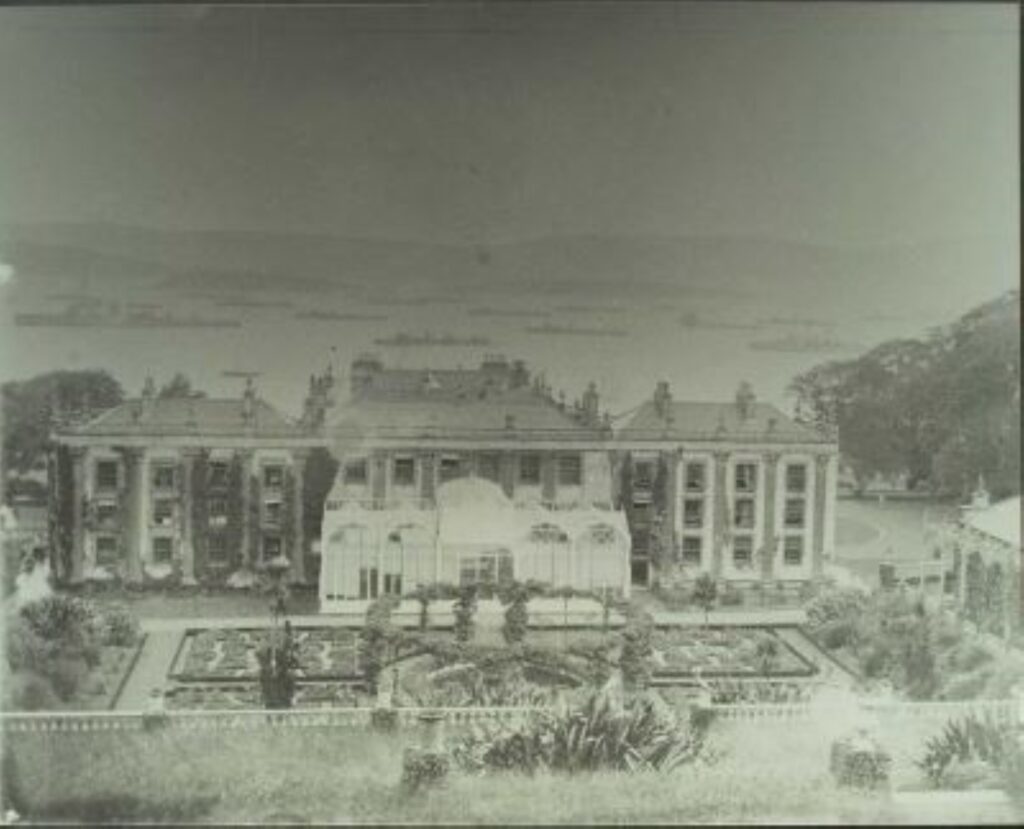
The Bantry Estate Collection is both one of the largest in the archive, containing some four thousand items, and was one of the first collections donated to the archive, in 1997. The image chosen to represent the collection is an early 20th century photograph of Bantry House and gardens. The current owners of the estate, the Shelswell- White family, have owned land in the Bantry area since the 1690s, and at one point were the largest land owners in east cork. Since the destruction of the public records in Dublin, private estate collections, such as Bantry Estate, provide an invaluable resource to researchers. Here in the archive the collection is used by the archivists in teaching classes for modules as varied as History of Art and Architecture.
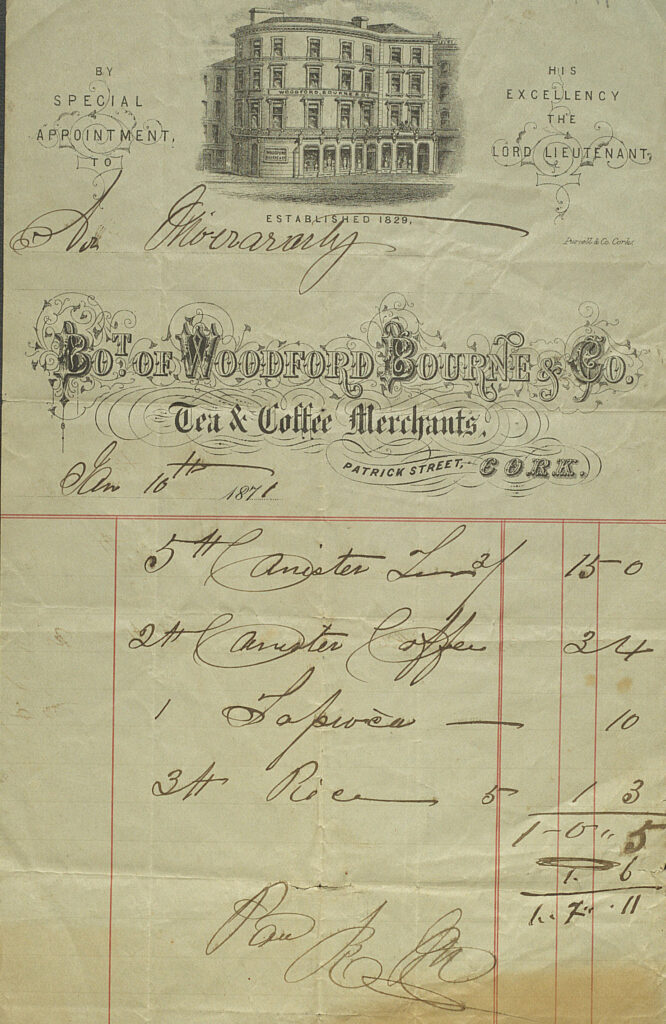
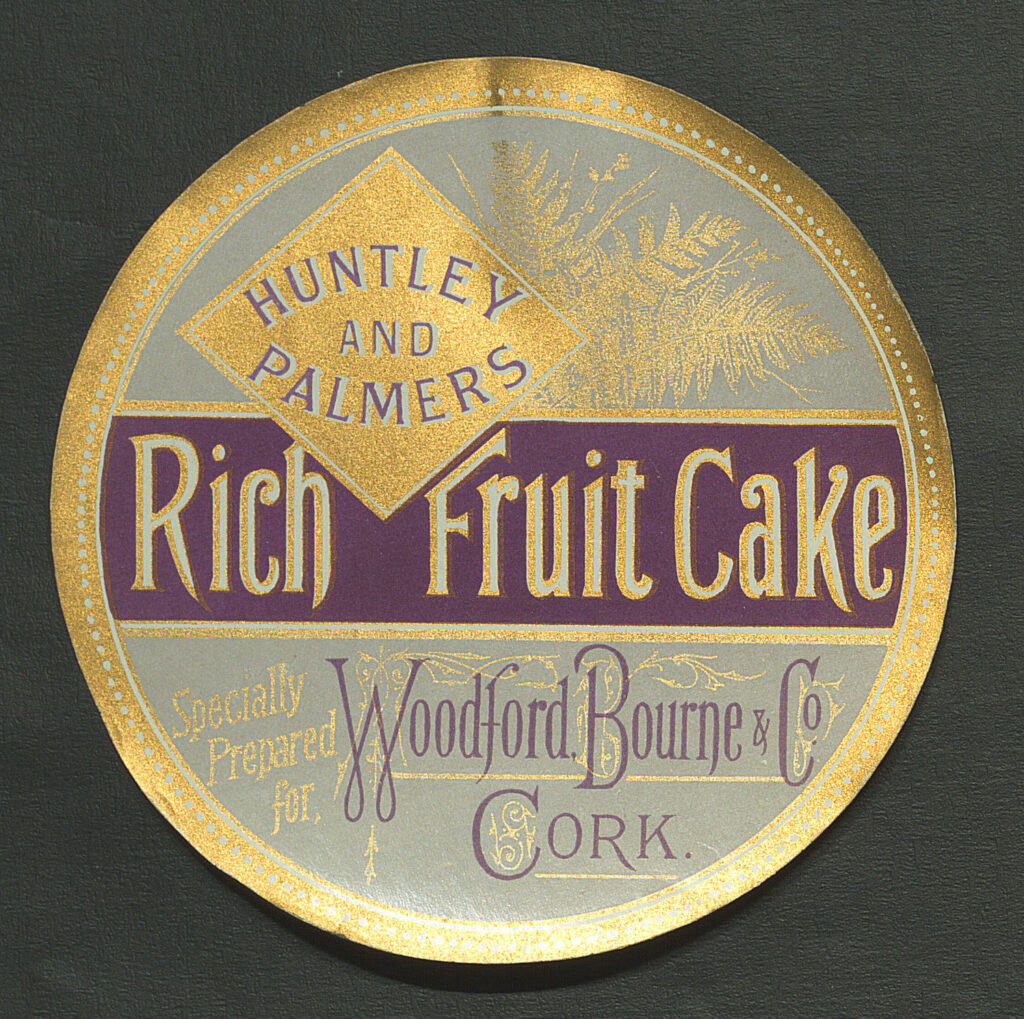
The next images on our wall come the Woodford Bourne collection. The first features a drawing of the company’s building on their headed notepaper. This building facade can still be recognised today as the McDonalds restaurant on Patrick Street. The second is a label for a rich fruit cake. An example of many from the Collection. The Woodford Bourne Collection is the business archive of Woodford Bourne & Co. Limited, Cork (wine and tea importers). The company can trace its origins back to a firm of wine merchants named Maziere and Sainthill which was trading in Cork as early as 1750. Woodford Bourne was for generations one of the icons of business in Cork City, occupying one of the premier sites on the corner of Patrick Street and Grand Parade (currently Macdonald’s). The firm also owned extensive warehouse premises on Sheares Street (currently the Mardyke bar). In the 1980s, the shop was converted to a fast-food outlet named ‘Mandy’s’ and the premises was taken over by McDonald’s in the mid-1980s. The collection is a wealth of resources on Cork commercial history, and ethnography.
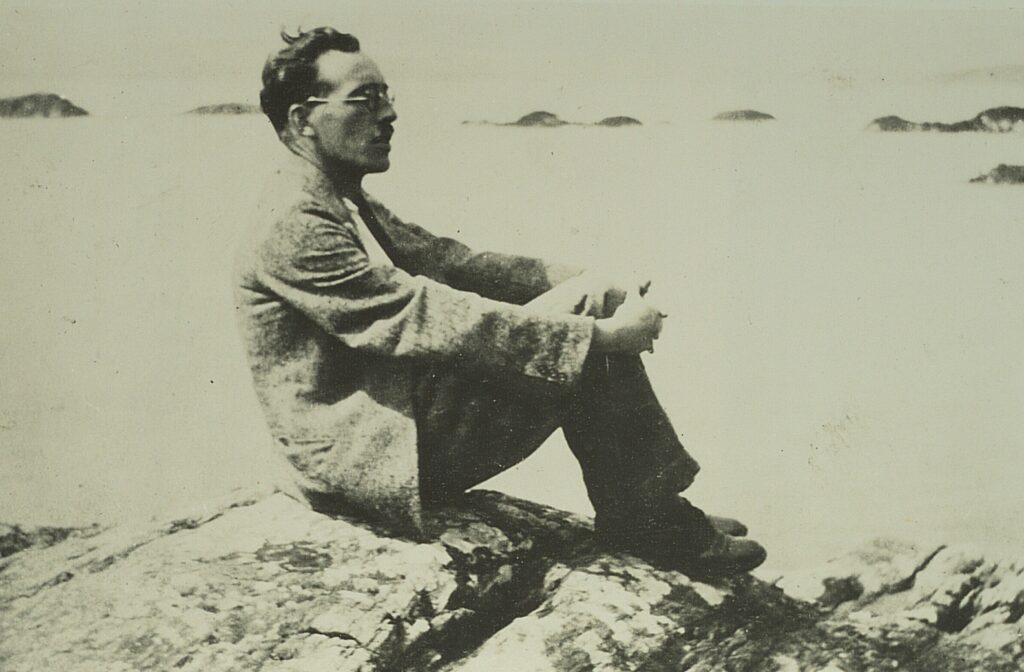
The above photograph is of the famed Irish author Frank O’Connor and is from the Nancy McCarthy Collection. Ms McCarthy was a lifelong friend of Frank O’Connor, and they corresponded widely during their relationship. A pharmacist, she managed her own chemist shop in Douglas and was active in the cultural and literary life of Cork up until her death. Her papers are a testament to her wide-ranging interests and contain much important material relevant for the study of women’s history, quite apart from the insights into the Irish literary world at that time. In 1927 she had been cast by O’Connor to play the lead in a production by the Cork Dramatic League, and she retained her interest in the theatre until her death. She corresponded with many of the leading Irish literary and artistic figures of her day (FOC , Eric Cross, Bill Naughton, Cyril Cusack and Seamus Murphy).
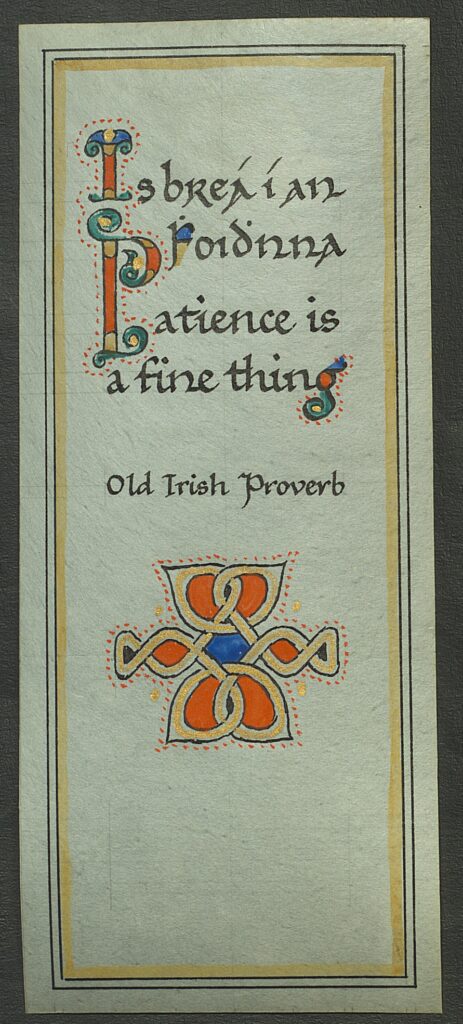
The final item featured in this week’s post is a vellum bookmark featuring an Irish proverb, from the Elizabeth Friedlander Collection. Elizabeth Friedlander was a Jewish, German born, graphic designer. She was forced to flee Germany at the beginning of the second world war and went on to work in Italy and the UK settling in Ireland in her later years. She is most famously known for her designs of the iconic penguin for Penguin Books, and her Friedlander Boarders- which can be seen further along the wall and will be discussed by Emer Twomey in next week’s post. This bookmark was made by Friedlander in Kinsale, under her Kinsale Crafts company, as part of a range which she sold to tourists. The Friedlander Collection is the largest visual collection in the archive and has been featured in exhibitions in both UCC and the Ditchling Museum UK.
In next weeks blog post, my fellow archivist Emer Twomey will write about the remaining images from the archival collections featured on our Portal to the Past wall.
